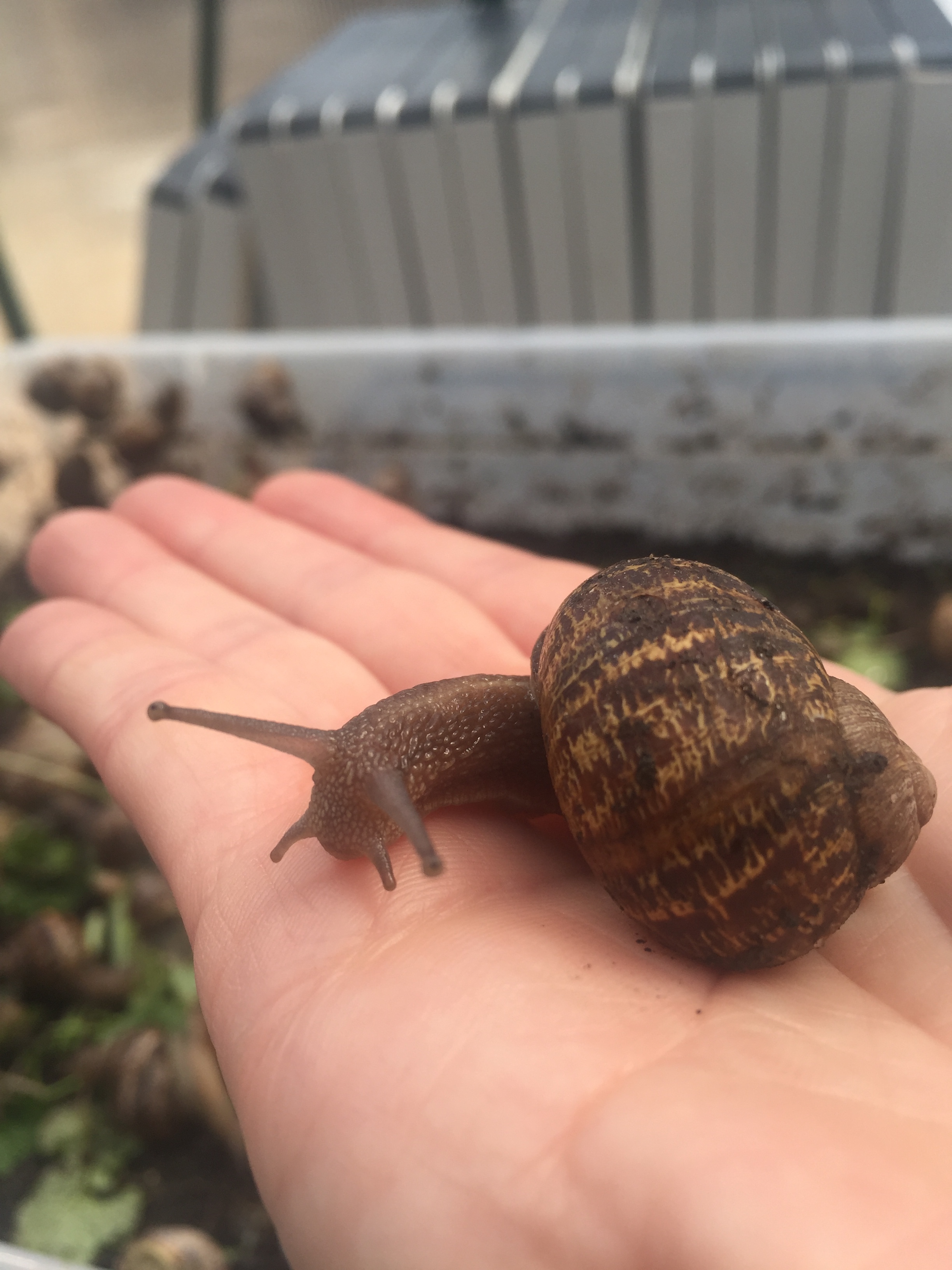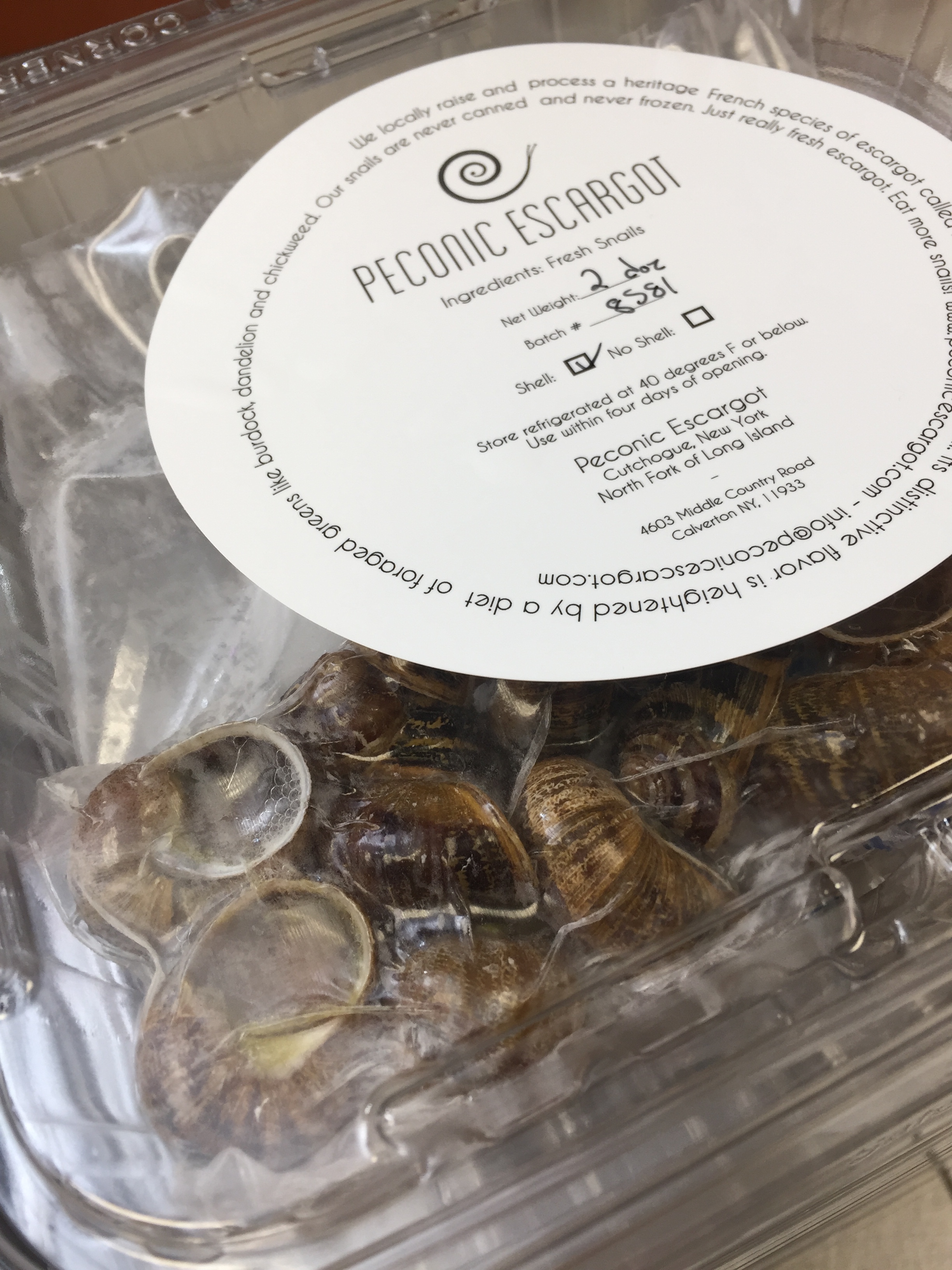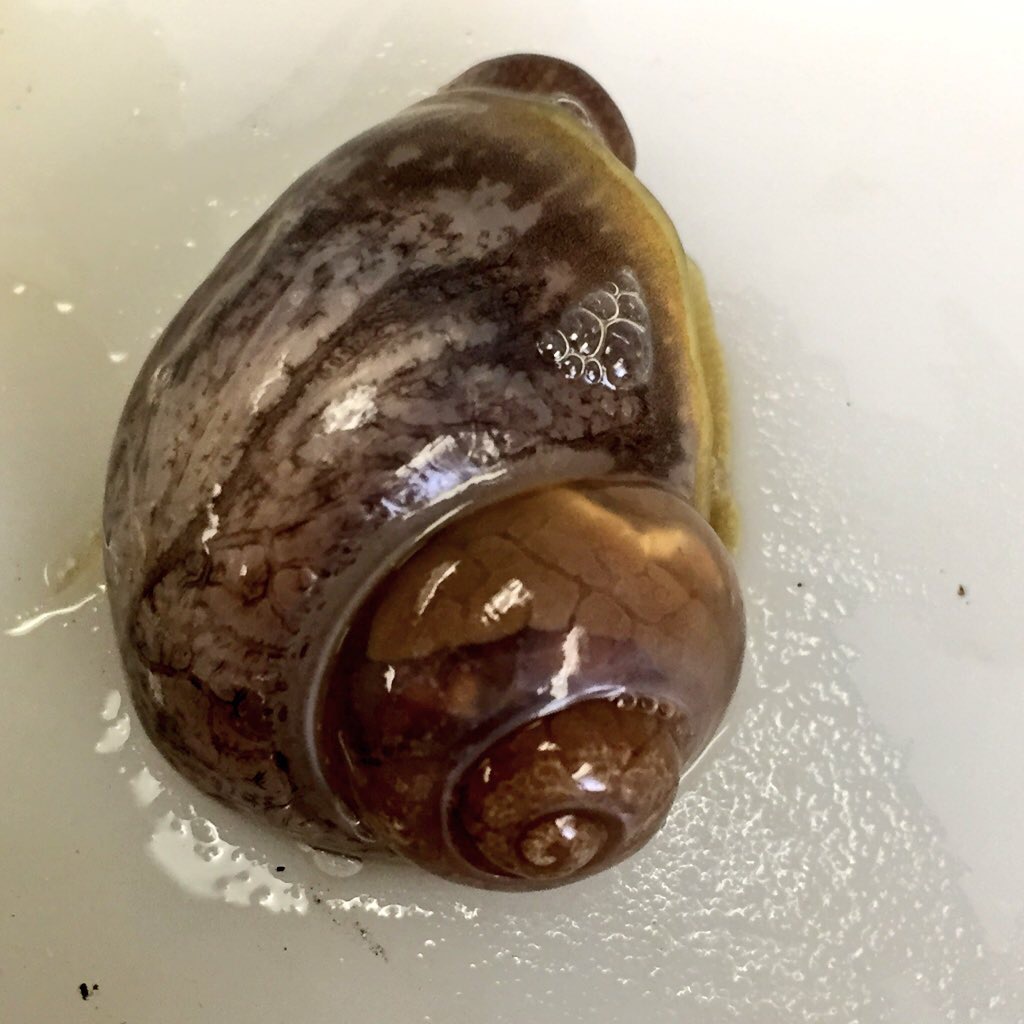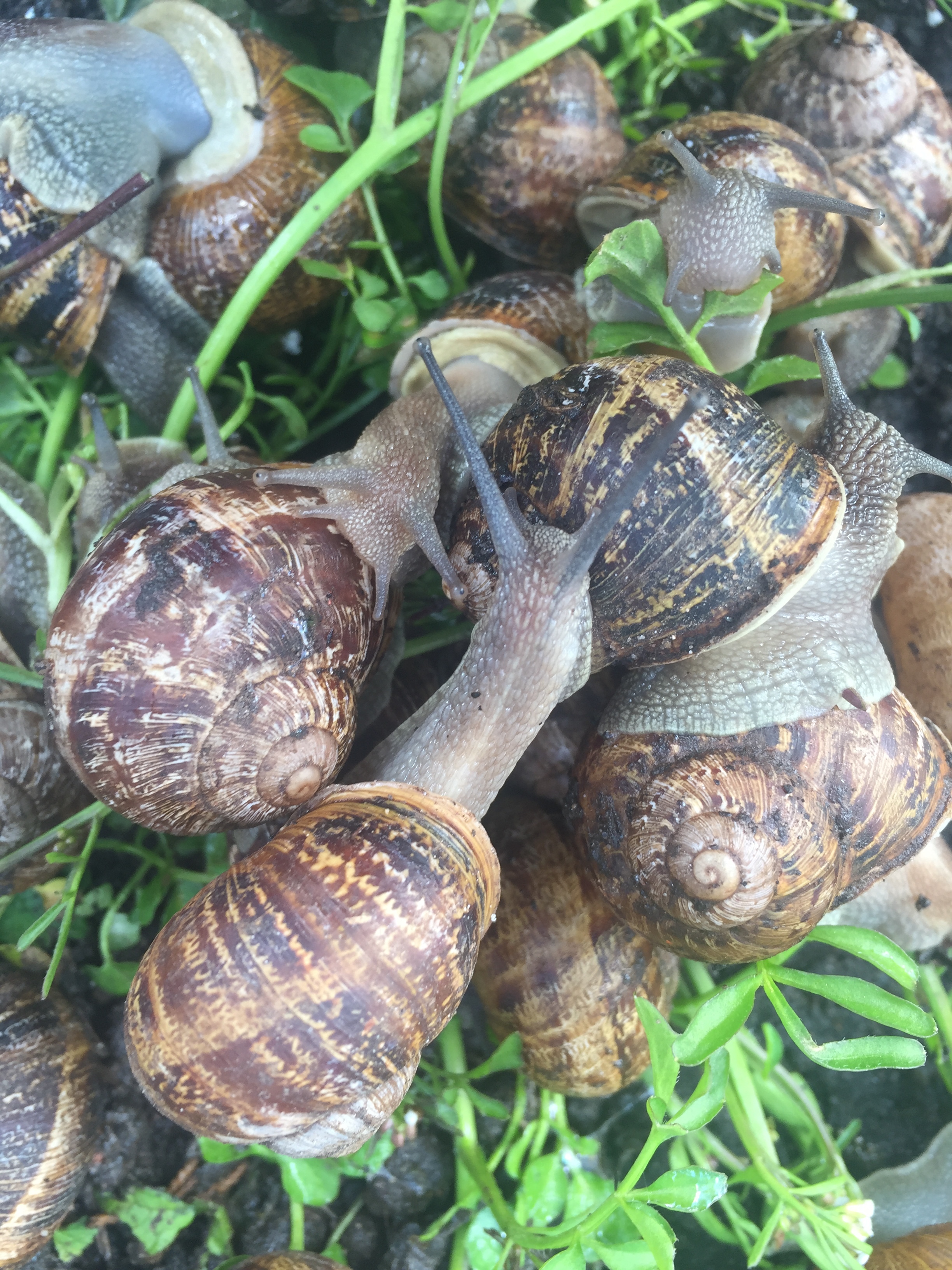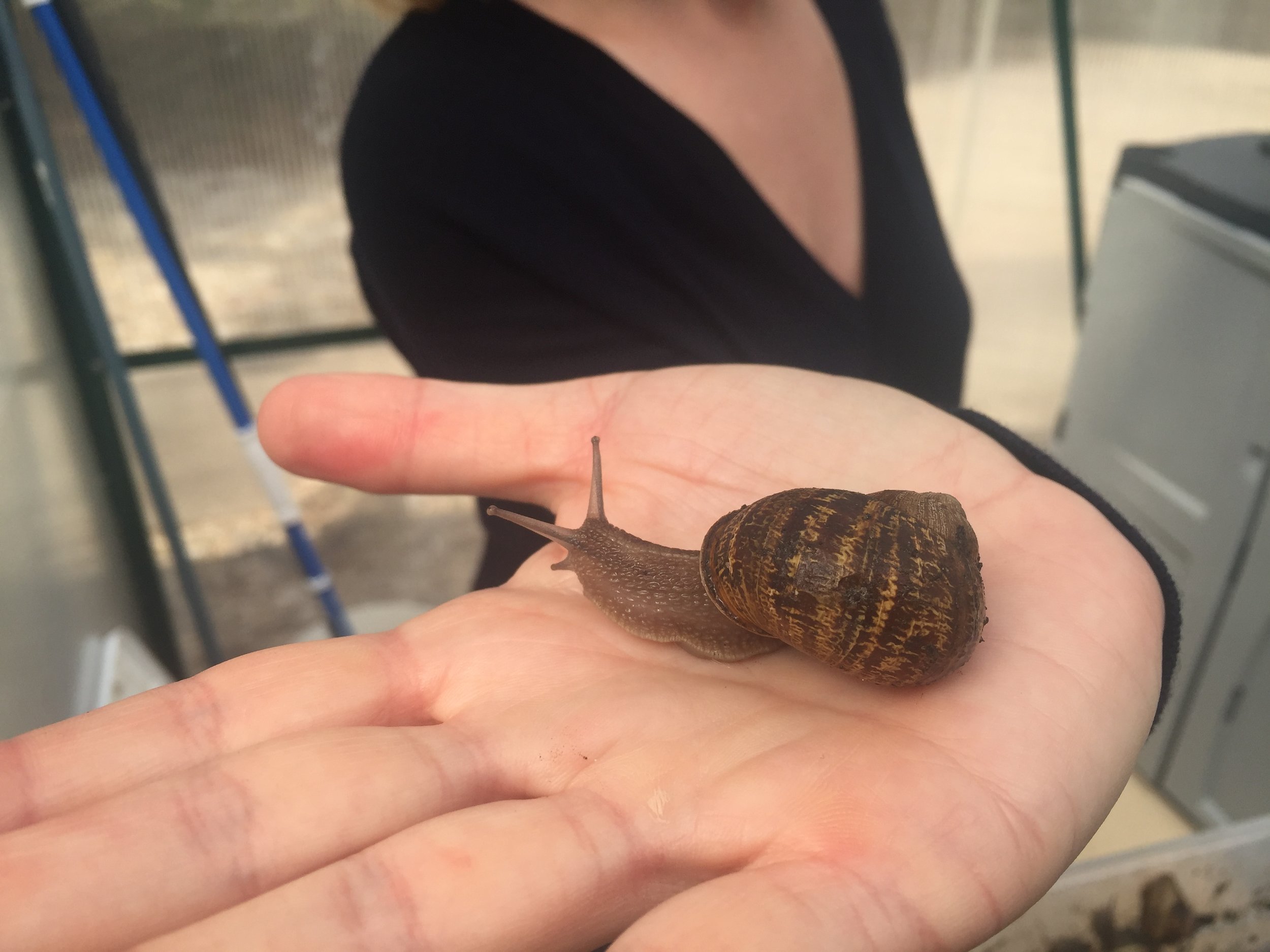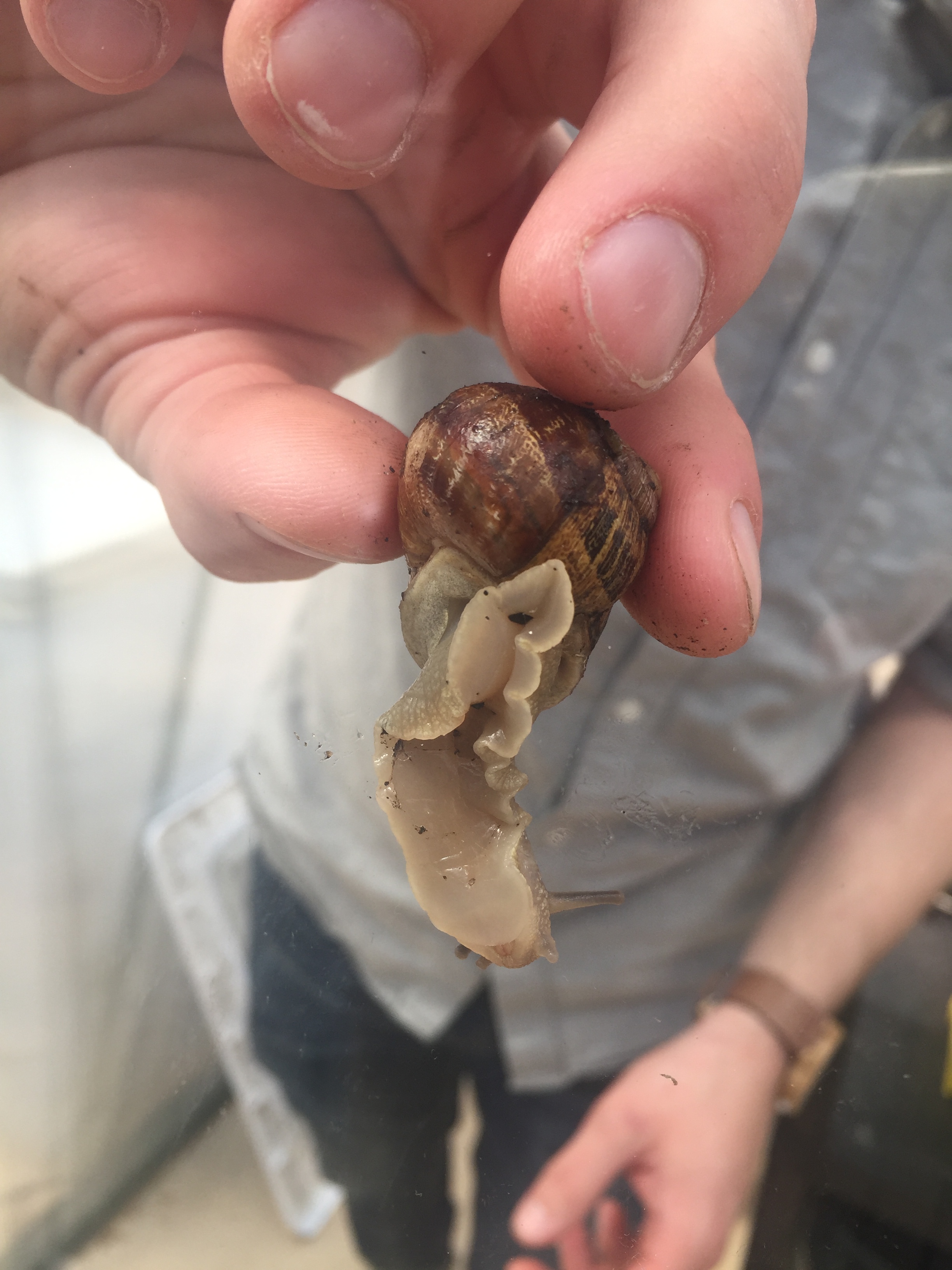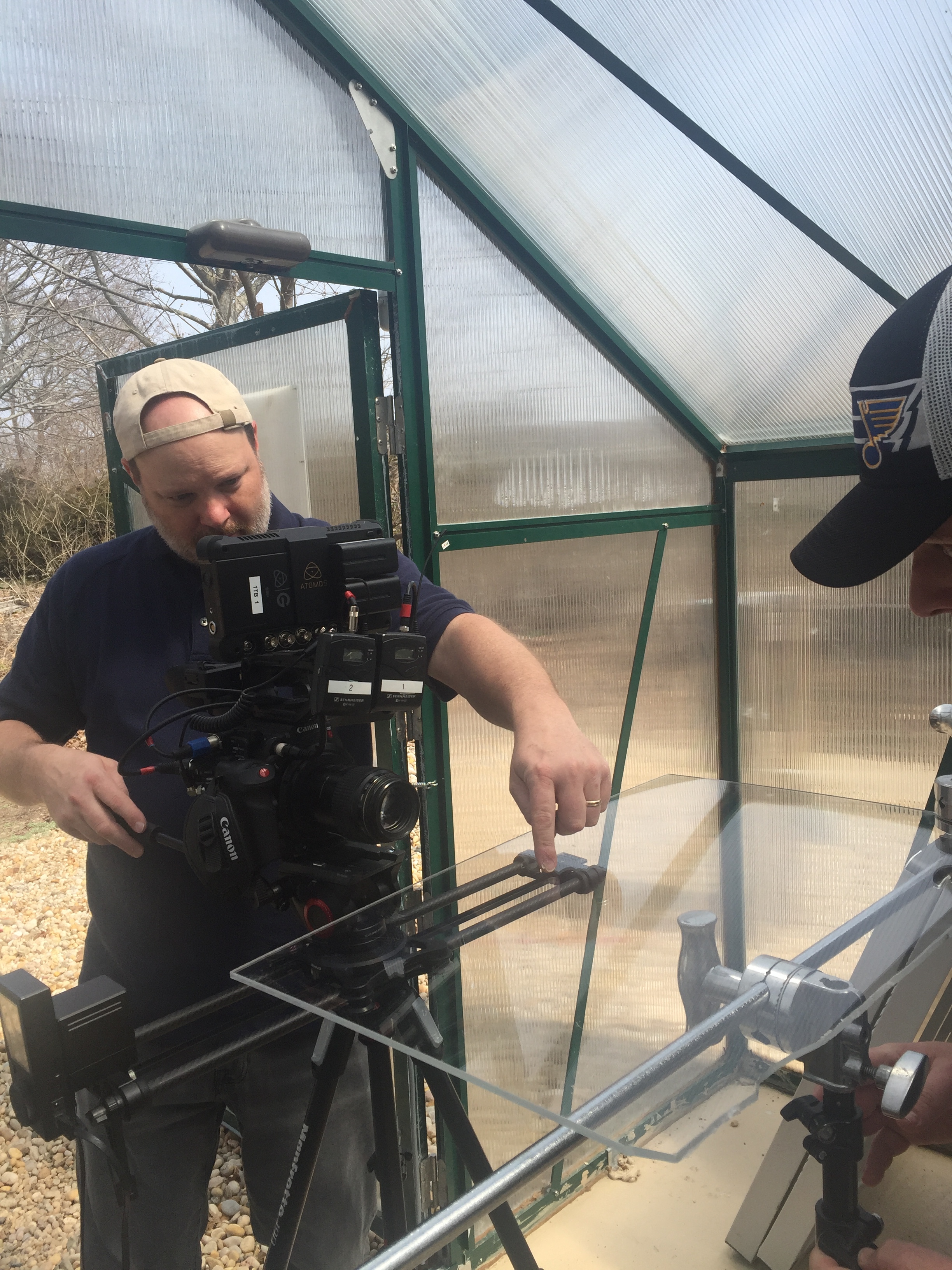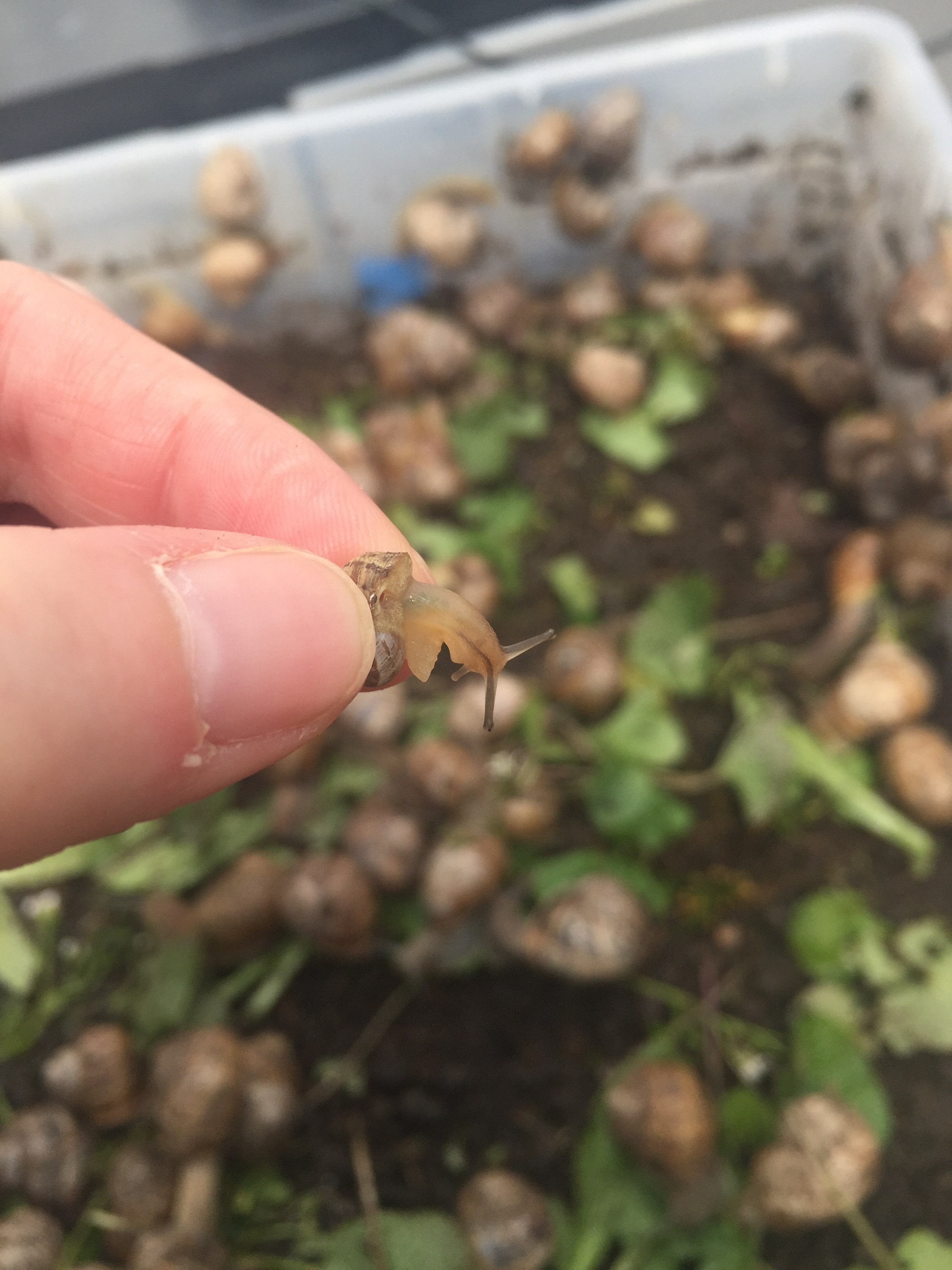Tens of thousands of petit gris snails are hand-raised on foraged greens in a tiny greenhouse on Long Island
Snails are cool.
That’s what I always say when people look at me funny when I tell them that we produced an episode on a snail farm on the North Fork of Long Island. And they really are cool — the fact that they’re delicious is a bonus. Snails are hermaphrodites, which means that they have both male and female reproductive organs and can all lay eggs. When they’re ready to mate, they shoot a love dart — yes, a love dart — into their intended and when they lay their eggs, the tiny, white spheres are pushed out out of the “shoulder” portion of their bodies.
Snails have been eaten by humans for tens of thousands of years and they are a beloved food source in many parts of the world, particularly France, Italy and Spain, which is why the breed of snail that is raised by Taylor and Kate Knapp is here on this continent. European immigrants brought snails along with them as they settled across North America and those snails, called petit gris, or “little grey,” snails, soon became a pest and are now considered an invasive species. In fact, when we were shooting the Edible Alchemy episode in San Diego, we visited Jose and Sandy Gama’s orchard and I noticed that there were petit gris snails everywhere.
Turns out, the snails are very harmful to the orchards, eating leaves, blossoms and young fruit. Because of this, when Taylor wanted to launch his snail farm, he had to go through a lot of red tape and put tremendous protections in place to ensure that none of the snails he raised were able to escape.
Taylor and Kate are the first USDA certified snail farmers in the U.S., which is hard to believe considering that escargot is common on restaurant menus. Those snails you enjoyed that were swimming in butter and garlic weren’t raised domestically. They came from either a can or a freezer and were imported from France, Italy, Africa, Spain …
A few years ago, Taylor, who is a trained chef and hosts a pop-up dinner series called Paw Paw, was looking for a source for snails to feature on a menu that was highlighting locally grown ingredients. He called around and couldn’t find any source for fresh, local snails, or American snails for that matter. One chef he spoke with laughed and offhandedly suggested that he raise the snails himself. That idea marinated for a while and after what Taylor says was a long, cold winter on Long Island without much to do, he decided to go for it and launch a snail farm.
Today, he and Kate raise over 100,000 snails in a tiny 300-square-foot greenhouse on land they lease from the Peconic Land Trust. They process and package the snails in a communal kitchen at the Stony Brook Business Incubator. And they distribute those snails — either with or without shells — directly to chefs in the New York region.
When we were there, the Knapps had plans to begin offering snail caviar as well. I had the chance to try one of the tiny, white eggs straight from the soil. The flavor was earthy and carroty and mild. The snail caviar is now available and you can order some for yourself, along with the fresh snails, directly from Peconic Escargot.
PECONIC ESCARGOT | CUTCHOGUE, NEW YORK

